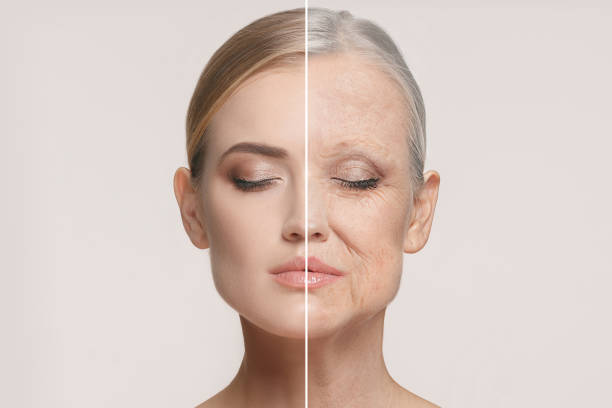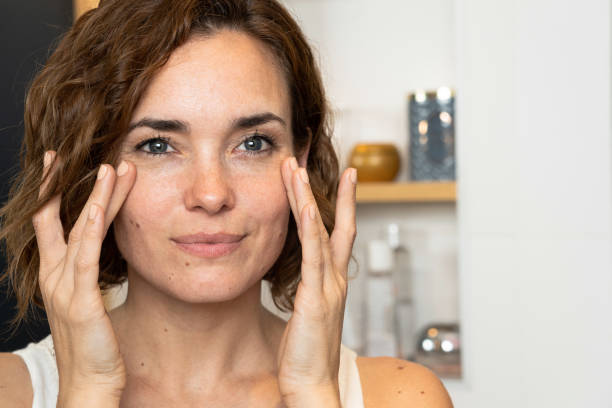When it comes to combating the signs of aging, Tretinoin is a name that frequently surfaces in the skincare community. For those seeking a way to diminish the appearance of wrinkles, Tretinoin promises gradual but substantial improvements. However, it requires patience; on average, individuals may begin to witness a noticeable change within 3 to 6 months of consistent use. The purpose of this article is to delve into the details of Tretinoin’s efficacy and provide a realistic overview of its timeline in treating wrinkles. We’ll explore the factors affecting its performance and offer tips to maximize results, considering the fact that there’s no ‘one-size-fits-all’ answer.
What is Tretinoin and How Does It Combat Wrinkles?

Tretinoin, a derivative of vitamin A, is known for its potent ability to promote skin cell turnover and improve the skin’s overall texture and tone. Used in the form of topical creams or gels, Tretinoin stimulates collagen production, an essential protein responsible for maintaining skin elasticity. As a result, it helps to reduce the depth and visibility of wrinkles. Furthermore, Tretinoin exfoliates the surface layers of the skin, which can make the skin appear smoother and more youthful. The effectiveness of Tretinoin relies not just on its powerful formula but also on dedication to regular application and proper skincare habits.
The Timeline: From Initial Use to Visible Results
The journey with Tretinoin begins the moment it’s applied to the skin, but visible changes take time. Initially, users may experience skin irritation, which is often a sign that the product is active. However, the journey toward wrinkle reduction is a marathon, not a sprint. In general, it can take anywhere from 3 to 6 months for users to notice improvements in wrinkle appearance, with more significant changes potentially taking up to a year. It’s vital to continue with the treatment and not be discouraged by the lack of immediate results.
Factors Influencing Tretinoin’s Effectiveness
Several factors can play a role in how quickly and effectively Tretinoin works on wrinkles. Among these factors are the strength of the Tretinoin formulation, ranging from 0.025% to 0.1%. Users’ individual skin types, including the degree of existing sun damage and natural skin turnover rate, also make a difference. Moreover, the consistency of the application is crucial; sporadic use will not yield the desired outcomes. Lastly, external factors such as exposure to sunlight and the use of other skin products can either complement or hinder the efficacy of Tretinoin treatments.
Navigating Tretinoin Usage: Tips for Best Results

To get the most out of Tretinoin, there are certain application tips and accompanying skincare practices to follow. Firstly, applying Tretinoin to clean, dry skin as part of an evening routine is recommended due to its photosensitivity. Secondly, starting with a lower concentration can help the skin build tolerance. Additionally, using sunscreen during the day is non-negotiable to protect the new and more sensitive skin against UV damage.
- Start with a pea-sized amount to avoid irritation.
- Apply Tretinoin every other night initially, increasing frequency as tolerated.
The Reality of Treatment: What to Expect as Your Skin Adapts
As with many potent skincare treatments, Tretinoin may initially cause side effects such as redness, peeling, and dryness. These reactions are typical responses as the skin acclimates to the medication. To alleviate discomfort, one can introduce Tretinoin slowly into their regimen, use a good moisturizer, and avoid other potentially irritating skin treatments. It’s imperative to monitor the skin’s reaction and adjust the application frequency as needed.
Progress Tracking: Keeping a Wrinkle Reduction Journal
Documenting the journey with Tretinoin can be both motivating and informative. A wrinkle reduction journal should include weekly observations of the skin’s texture, appearance of wrinkles, and any side effects experienced. This personal record can help users and dermatologists alike in assessing the progress and making necessary adjustments to the skincare regimen.
- Weekly skin descriptions
- Noting side effects or improvements
When to Consult a Dermatologist
Consulting with a dermatologist is advised before starting Tretinoin and for follow-ups during treatment. They can offer personalized advice based on individual skin conditions, adjust treatment plans, and address any concerns as they arise. When experiencing severe side effects or when results are not visible after a significant amount of time, a professional opinion is crucial to determine the next steps in skin care.
| Concentration | Frequency of Initial Use | Advised Time of Application |
|---|---|---|
| 0.025% | Every other night | Evening |
| 0.05% | Every third night | Evening |
| 0.1% | Once a week | Evening |
Conclusion
Patience is a virtue when it comes to Tretinoin treatment for wrinkle reduction. With an average timeline of 3 to 6 months for the onset of visible results and possible further improvements over the course of a year, it’s essential to maintain a consistent application routine. Users should prepare for the initial adaptation phase that includes managing side effects. In combination with a protective and nurturing skincare regimen, Tretinoin can lead to healthier, more youthful-looking skin over time.
FAQs: Tretinoin and Wrinkle Treatment Timelines
- Q: What is the shortest amount of time I might see results from Tretinoin for wrinkles?
- A: Some individuals report mild improvements within 2 to 3 months of consistent use.
- Q: Can certain factors speed up the effectiveness of Tretinoin on wrinkles?
- A: Diligent sun protection, higher Tretinoin concentrations, and a compatible skincare regime might enhance results, though professional guidance is important.
- Q: Is it normal to experience skin irritation when first using Tretinoin?
- A: Yes, initial signs like irritation and peeling are common and typically subside over time.
- Q: Will Tretinoin still work if used less frequently?
- A: Less frequent use may prolong the timeline for results, but caution is necessary to avoid irritation. Consult a dermatologist for personal advice.
- Q: If I don’t see results after 6 months, should I stop using Tretinoin?
- A: Before discontinuing, seek a dermatologist’s counsel as they might adjust your treatment regimen or explore alternatives.
